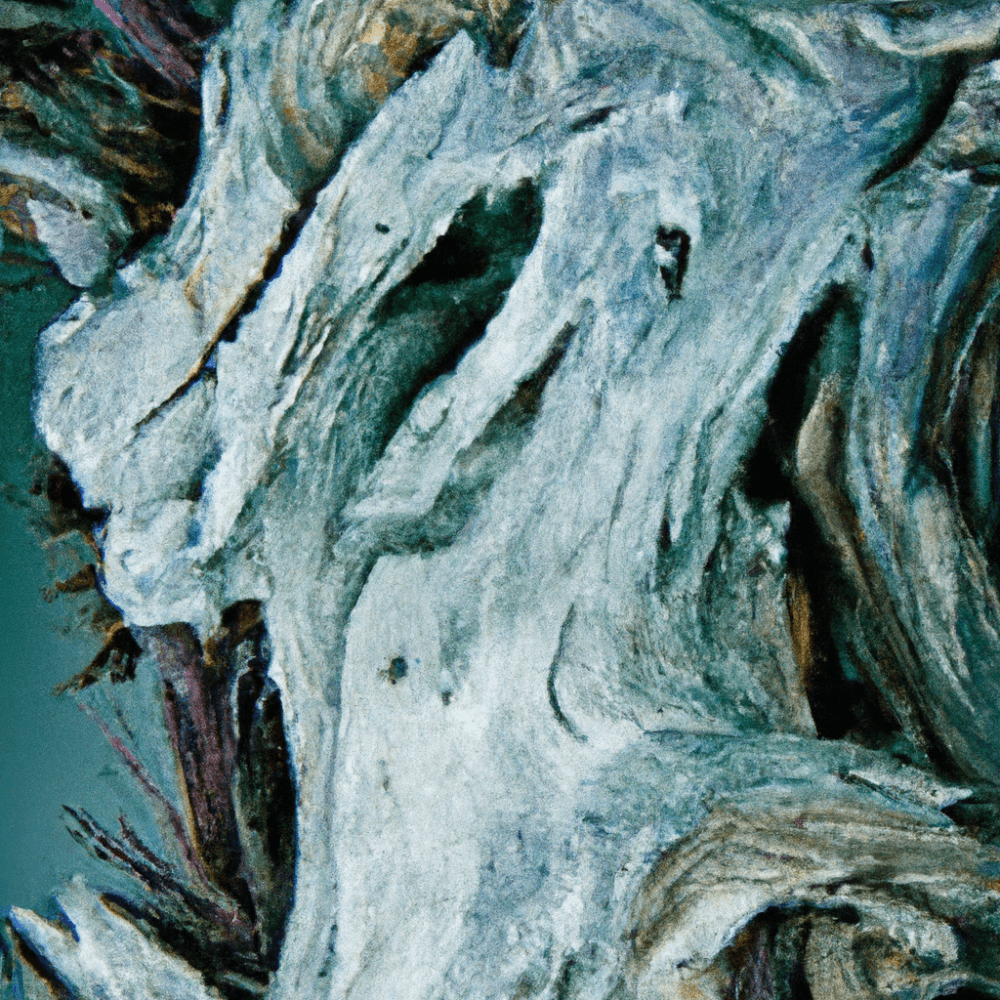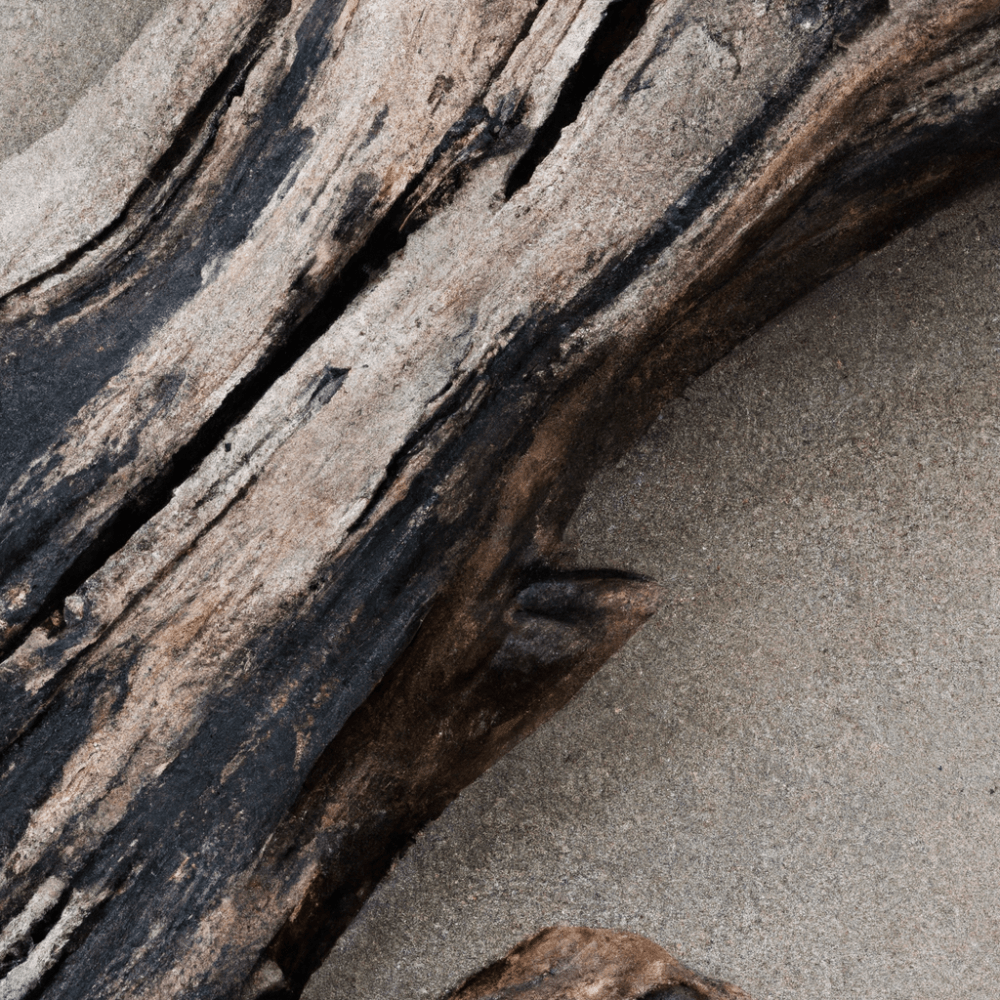Imagine walking along a picturesque beach, the soothing sound of crashing waves filling your ears. Suddenly, something catches your eye – a beautifully weathered piece of driftwood lying untouched in the sand. As you pick it up and examine its unique textures and shapes, a thought niggles at the back of your mind: does driftwood go bad? In this article, we’ll explore the intriguing world of driftwood and uncover whether this natural treasure has an expiration date.

What is Driftwood?
Definition
Driftwood refers to wood that has been washed onto the shores of bodies of water, such as rivers, lakes, oceans, or seas. It is a natural material that has been carried by water currents and weathered by the elements over time. Driftwood can come in various shapes and sizes, and is known for its unique and weathered appearance.
Characteristics
Driftwood possesses several distinctive characteristics that make it sought after for various purposes. One of its most notable features is its smooth, weathered texture, which is the result of being exposed to water, sand, and other abrasive substances. Additionally, driftwood often showcases natural patterns and unique shapes, making it highly appealing for decorative and artistic purposes. It also tends to be lightweight, making it easy to handle and work with.
Factors Affecting Driftwood’s Durability
Exposure to Elements
One of the primary factors that can affect the durability of driftwood is its exposure to the elements. Prolonged exposure to sunlight, rain, snow, and wind can cause the wood to become more vulnerable to degradation. UV rays from sunlight can cause discoloration and degradation of the wood fibers, while water can lead to warping, cracking, or decay.
Water Damage
Since driftwood is primarily found near bodies of water, it is susceptible to water damage. Constant exposure to moisture can lead to decay, rotting, and the growth of mold or fungus. The prolonged contact with water can weaken the wood’s structure and compromise its durability.
Insect Infestation
Another factor that can negatively impact driftwood’s durability is insect infestation. Wood-boring insects, such as termites or beetles, can burrow into the wood and cause extensive damage. These insects feed on the wood fibers, weakening the structure and potentially leading to the collapse of the piece.
Signs of Bad Driftwood
Change in Color
A noticeable change in color is one of the key signs that indicate driftwood has gone bad. If the wood’s natural hue changes significantly, such as becoming darker, discolored, or moldy, it may be an indication of decay or rot.
Soft and Spongy Texture
When driftwood starts to deteriorate, its once sturdy and solid texture may become soft and spongy. This change in texture can be felt when touching the wood, indicating that the inner structure has been compromised by decay or infestation.
Visible Decay or Rot
Decay or rot can be visibly identified on driftwood. Signs of decay include crumbling or disintegrating wood, visible holes or tunnels created by wood-boring insects, or the presence of mold or fungus on the surface. These visible signs indicate that the wood is in a deteriorating state.
Effects of Using Bad Driftwood
Aesthetic Impact
Using bad driftwood can have a significant negative impact on the overall aesthetic of a space. Instead of enhancing the natural beauty of the wood, decaying or rotting driftwood can create an unsightly and unappealing visual appearance. It can clash with the intended design or style and undermine the desired atmospheric effect.
Structural Issues
Using bad driftwood in structural applications, such as furniture or building elements, can pose serious issues. Weakened or rotted wood may lack the necessary structural integrity to support weight or withstand normal wear and tear. This can lead to the collapse or failure of the piece, compromising safety and functionality.

Preventing Driftwood from Going Bad
Proper Drying
To prevent driftwood from going bad, it is crucial to ensure that it is properly dried before its intended use. Drying driftwood removes excess moisture and helps minimize the risk of decay or mold growth. The wood should be allowed to dry naturally in a well-ventilated and shaded area, away from direct sunlight.
Sealing and Varnishing
Applying a sealant or varnish to driftwood can help protect it from the elements, particularly water damage. A waterproof sealant or varnish can create a barrier that prevents moisture from penetrating the wood, reducing the risk of decay or rot. It also helps preserve the natural color and texture of the driftwood.
Regular Inspection
Regularly inspecting driftwood allows you to identify early signs of decay or damage. By closely examining the wood’s surface and texture, you can catch any potential issues before they worsen. Promptly addressing any signs of deterioration through appropriate treatment or disposal can help prolong the lifespan of the driftwood.
Uses of Driftwood
Décor and Art
Driftwood is widely used in interior design and art projects for its unique and natural beauty. It can be incorporated into various decorative items, such as wall hangings, sculptures, or centerpiece arrangements. Its weathered appearance adds character and charm to any space, creating a rustic or coastal vibe.
Aquariums and Terrariums
Driftwood is a popular choice for aquarium and terrarium setups. Its natural and textured appearance mimics underwater or natural landscapes, providing a more realistic and visually appealing environment for aquatic or terrestrial pets. Additionally, the wood’s surface can provide perching spots or hiding places for the animals.
Furniture and Structural Elements
Driftwood can be used to create one-of-a-kind furniture pieces and structural elements. It can be incorporated into tables, chairs, shelves, or even entire cabinetry systems. The organic and unique shapes of driftwood make each piece truly one-of-a-kind, adding a touch of natural beauty to any home or space.
Driftwood Care and Maintenance
Cleaning
Regular cleaning of driftwood helps maintain its appearance and prevent the buildup of dirt or debris. Gently brushing the wood’s surface with a soft brush or cloth can remove loose particles or dust. If necessary, a mild detergent diluted in water can be used, followed by thorough rinsing and drying.
Replenishing Natural Oils
Driftwood can benefit from the occasional application of natural oils to restore its moisture and enhance its appearance. Oils, such as teak or linseed oil, can be gently rubbed onto the wood’s surface using a cloth. This helps nourish the wood, bringing out its natural colors and rejuvenating its texture.
Protective Measures
To prolong the lifespan of driftwood, protective measures can be taken. Placing it away from direct sunlight or extreme temperature changes can minimize the risk of color fading or warping. Additionally, avoiding excessive moisture exposure, such as keeping it away from areas prone to spills or high humidity, can help prevent decay or rot.
How Long Does Driftwood Last?
Factors to Consider
The lifespan of driftwood can vary depending on several factors. The type of wood, the conditions it is exposed to, and the presence of any pre-existing damage or infestation can all affect how long it will last. Proper care and maintenance can significantly extend the lifespan of driftwood.
Average Lifespan
On average, well-maintained and properly cared for driftwood can last for several years, even decades. With regular inspections, timely treatments, and protective measures, the lifespan of driftwood can be maximized. However, it is important to note that the natural deterioration process may still occur over time, albeit at a slower rate.
Alternatives to Driftwood
Man-Made Wood Products
For those looking for a driftwood-like appearance without the potential drawbacks, man-made wood products can serve as alternatives. These products are designed to replicate the appearance and texture of driftwood while offering enhanced durability and resistance to decay or infestation.
Other Natural Materials
If driftwood is not readily available or does not suit the desired purpose, there are other natural materials that can be used as alternatives. Branches or logs from hardwood trees, such as oak or maple, can provide a similar aesthetic. Additionally, certain types of rocks or stones can be used to achieve a similar effect in aquariums or terrariums.
Conclusion
Driftwood is a unique and natural material that offers a distinctive appearance and various uses. However, its durability can be affected by factors such as exposure to the elements, water damage, and insect infestation. By recognizing the signs of bad driftwood and taking preventive measures, such as proper drying, sealing, and regular inspections, its lifespan can be extended. Care and maintenance, including cleaning, replenishing natural oils, and protective measures, can help preserve its beauty. Driftwood can be used in a wide range of applications, from décor and art to furniture and structural elements. While its average lifespan can vary, alternatives such as man-made wood products or other natural materials are available for those seeking similar aesthetics. With proper care and consideration, driftwood can continue to enhance spaces and bring a touch of nature’s beauty for years to come.



